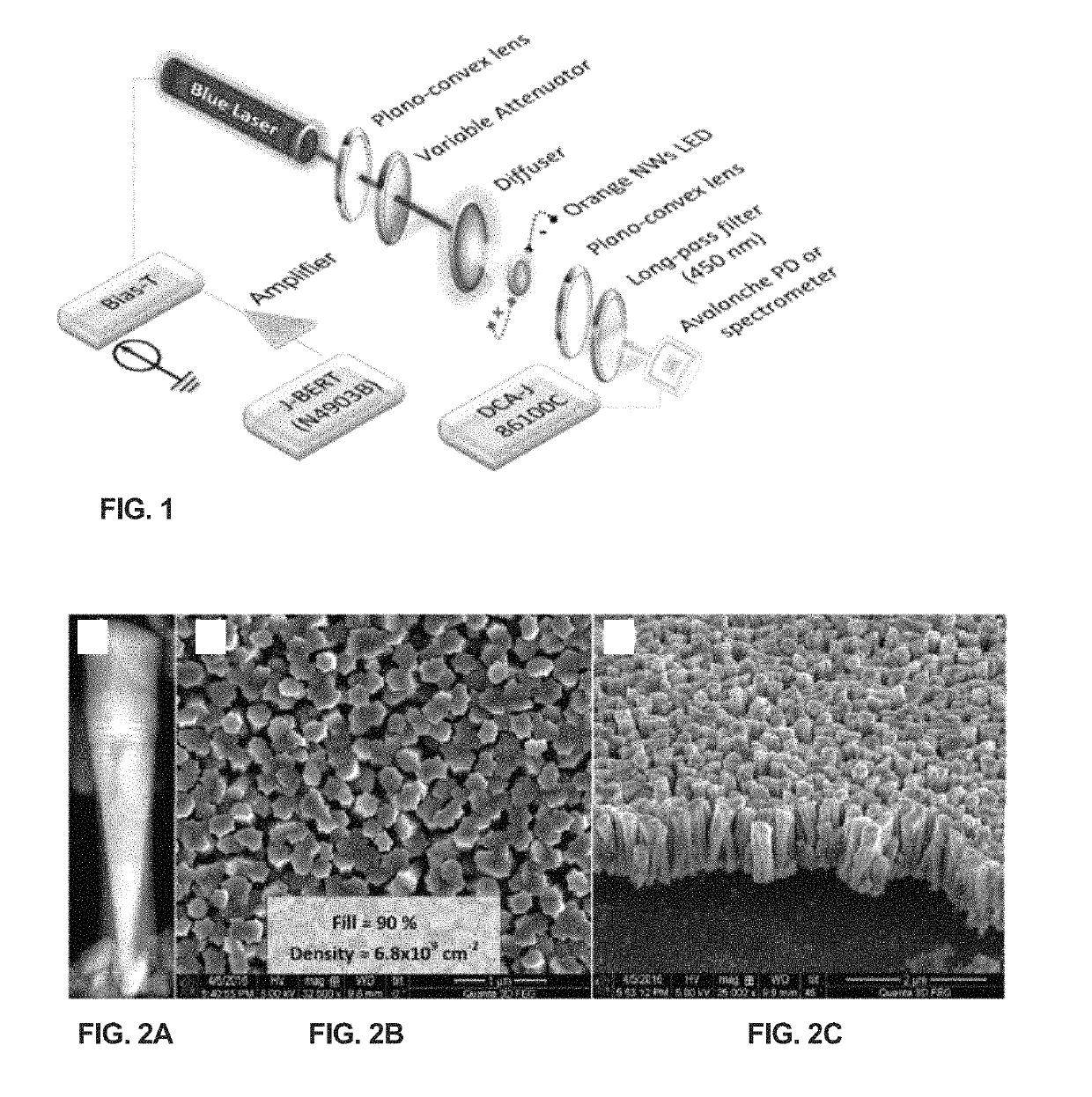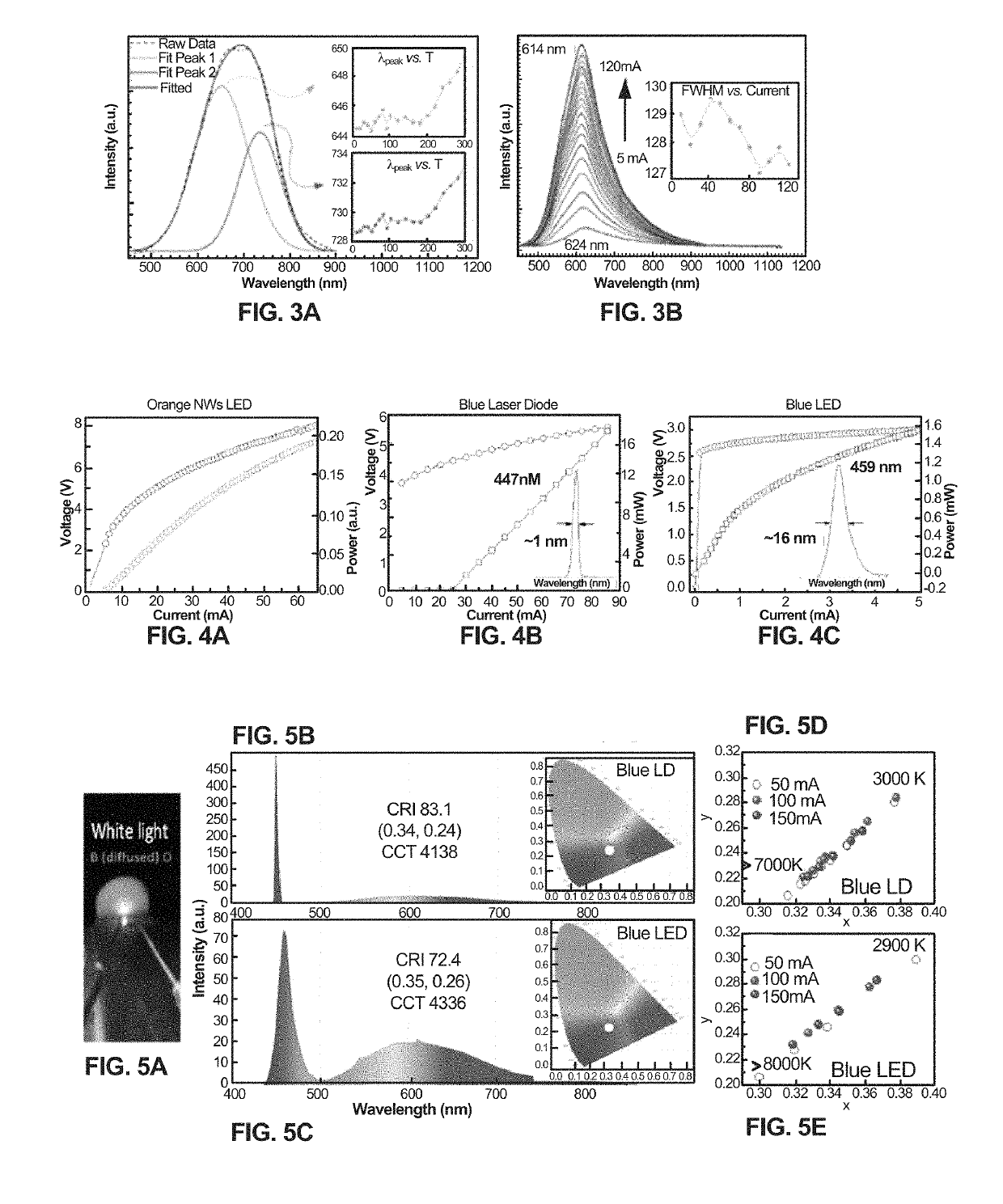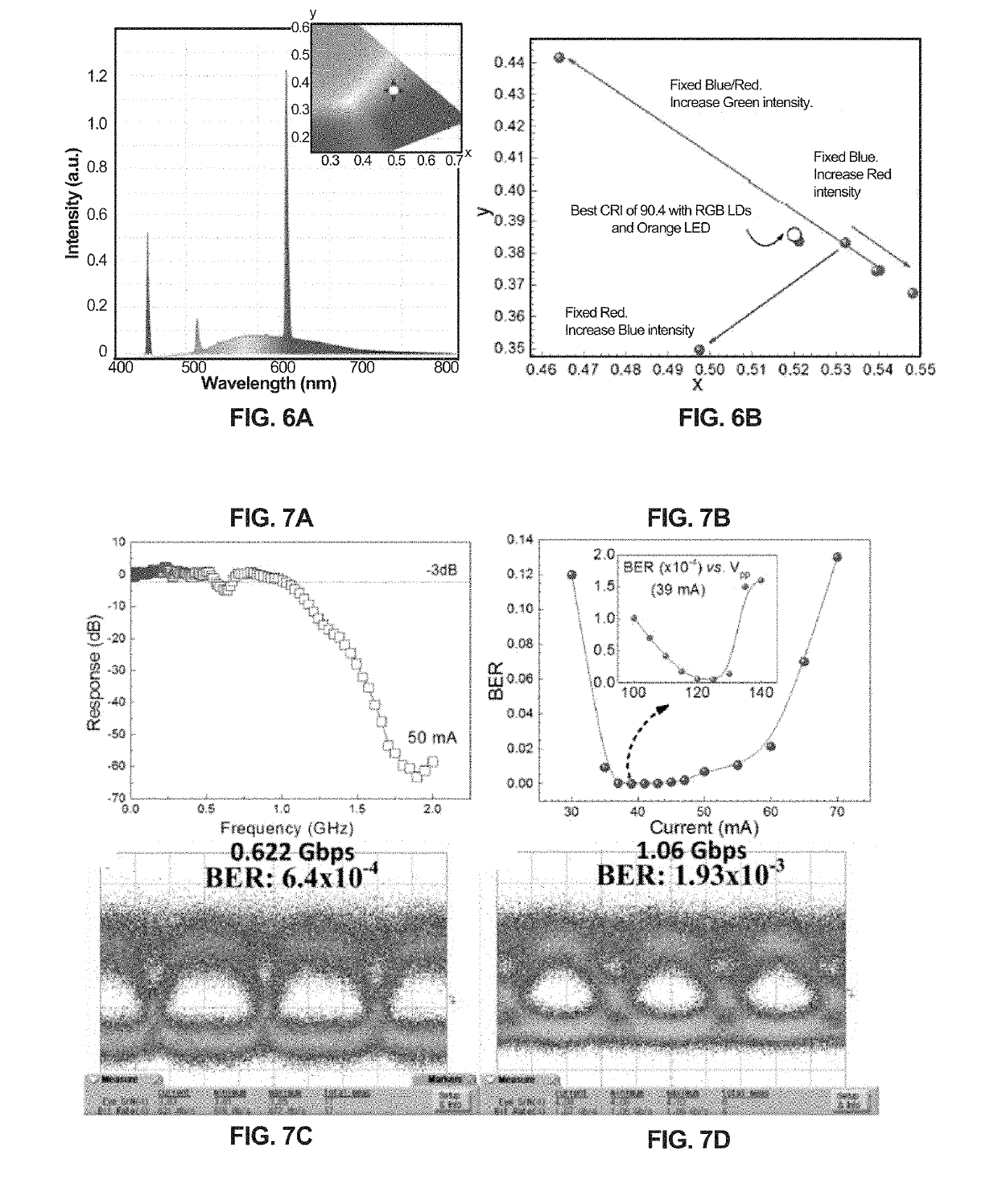Ultrabroad linewidth orange-emitting nanowires LED for high CRI laser-based white lighting and gigahertz communications
a technology of nanowires and lasers, applied in semiconductor lasers, light sources, light sources, etc., can solve the problems of phosphor based techniques, radio frequency, rf) communications, as the primary source of wireless communications, experiencing bandwidth limitations, etc., and achieves greater bandwidth, efficient electrical to optical efficiency, and high efficiency.
- Summary
- Abstract
- Description
- Claims
- Application Information
AI Technical Summary
Benefits of technology
Problems solved by technology
Method used
Image
Examples
examples
[0030]The orange NWs LED was grown using GEN 930 plasma-assisted molecular beam epitaxy (PA-MBE) system. Native oxide was removed from a silicon substrate using HF—H2O solution followed by deposition of 100 nm of titanium (Ti). The silicon (Si) doped gallium nitride (GaN) was first nucleated at a lower substrate temperature of 500° C. followed by growth at a higher temperature of 600° C. for crystal quality improvement. Nitrogen (N2) flow was maintained at 1 sccm with RF power set to 350 W. Active region was grown using seven stacks of GaN quantum barrier (8 nm) and InGaN quantum disk (4 nm). The quantum disks were grown at a lower temperature of 515° C. followed by capping of 2 nm of GaN, to avoid dissociation when ramping up for quantum barrier growth. Indium (In) beam equivalent pressure (BEP) was set at 5×10−8 Torr while for Gallium (Ga) it was varied between 3×10−8-6×10−8 Torr. A 60 nm thick magnesium-doped GaN was then grown. Titanium nitride (TiN) has been seen to form at NWs...
PUM
 Login to View More
Login to View More Abstract
Description
Claims
Application Information
 Login to View More
Login to View More - R&D
- Intellectual Property
- Life Sciences
- Materials
- Tech Scout
- Unparalleled Data Quality
- Higher Quality Content
- 60% Fewer Hallucinations
Browse by: Latest US Patents, China's latest patents, Technical Efficacy Thesaurus, Application Domain, Technology Topic, Popular Technical Reports.
© 2025 PatSnap. All rights reserved.Legal|Privacy policy|Modern Slavery Act Transparency Statement|Sitemap|About US| Contact US: help@patsnap.com



